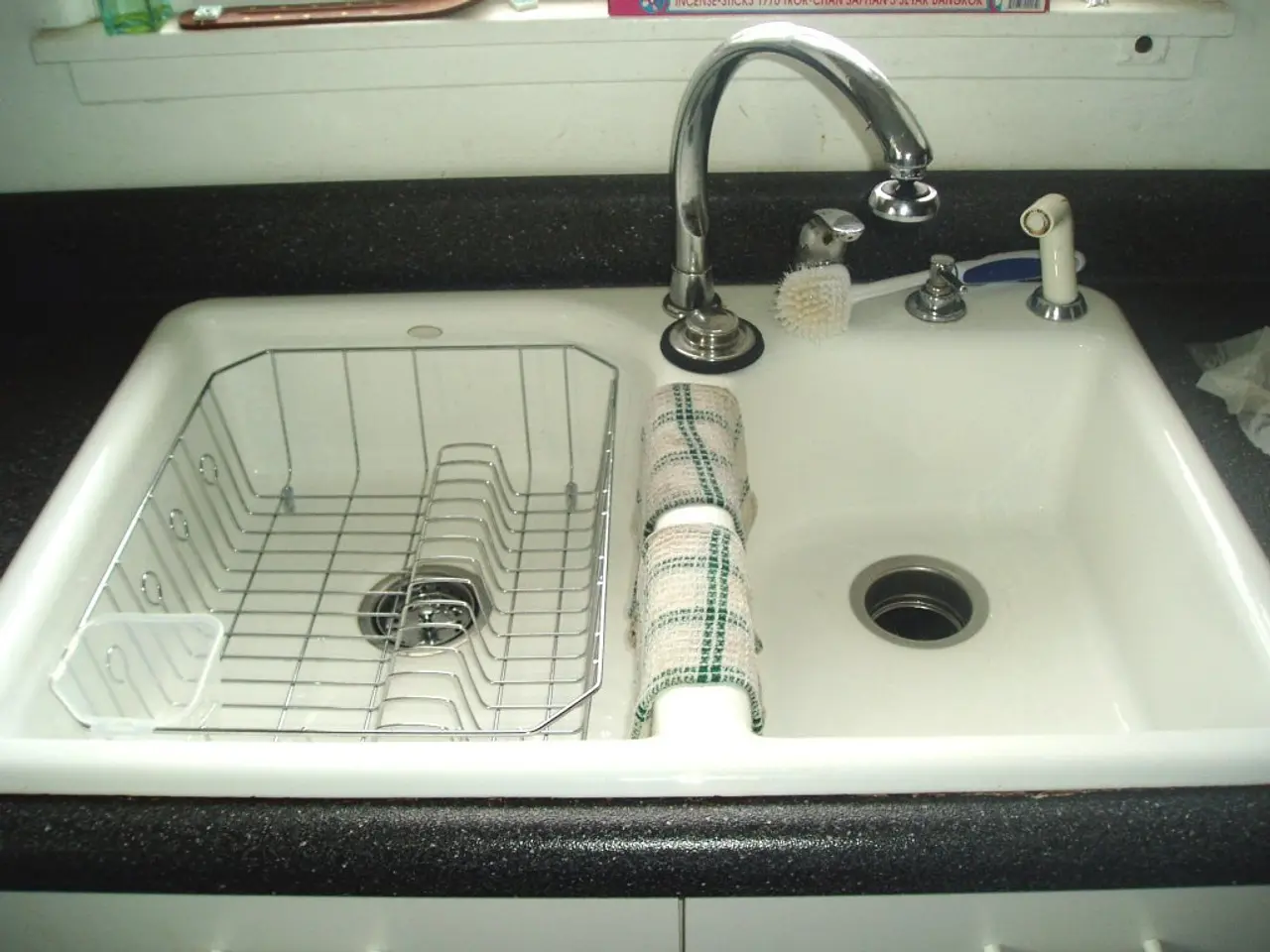Exploring Obsessive-Compulsive Disorder (OCD) and its link to cleanliness habits
In the realm of mental health, Obsessive-Compulsive Disorder (OCD) is a common condition that affects many individuals worldwide. While OCD is often associated with compulsions such as excessive handwashing or cleaning, repeated ordering and organizing, and repeated checking, a specific subtype known as Contamination and Cleaning OCD focuses on intense fears of germs, dirt, or contamination [1][2][3].
Key symptoms of Contamination and Cleaning OCD include persistent, intrusive fears of becoming ill from everyday activities like touching doorknobs, shaking hands, or using public restrooms. To reduce anxiety, individuals engage in compulsions such as excessive handwashing, showering, cleaning surfaces repeatedly, avoiding certain environments or people, and performing elaborate rituals before eating or leaving the house [1][2][3].
These compulsions, while providing temporary relief, ultimately reinforce the OCD by maintaining the false belief that contamination is imminent and dangerous. This can severely interfere with daily functioning, impacting relationships, work, and social activities due to time-consuming rituals and avoidance behaviours [1][2].
Contamination OCD is not just a preference for cleanliness but a debilitating disorder. Early diagnosis and treatment can help control symptoms and reduce their impact on a person's life [1][2]. Factors that may increase the risk of developing Contamination and Cleaning OCD include having a family member with OCD, especially if it developed during the teen years, childhood trauma, exposure to contaminants, fear of contracting illnesses, and a history of a streptococcal infection [4][5].
It is essential to note that not all cleaning behaviours are indicative of OCD. OCD cleaning compulsions tend to be excessive, take up too much time, and negatively affect a person's life [6]. For instance, a person who excessively washes their hands after going to a public place and holding items that others commonly use, such as door knobs and surfaces, might be exhibiting signs of Contamination and Cleaning OCD.
Treatment for OCD includes Exposure and Response Prevention (ERP), a subtype of Cognitive Behavioral Therapy (CBT), and Serotonin-specific reuptake inhibitors (SSRIs) such as fluoxetine, sertraline, fluvoxamine, and paroxetine [7]. ERP helps prevent a person from performing compulsions by restructuring the mind and altering the learned behaviour of performing the compulsion [8].
While the exact cause of OCD remains unknown, it is believed that abnormalities in frontal and subcortical structures of the brain may be a risk factor [9]. Obsessions in OCD may include fear of contamination or germs, presence of taboo thoughts concerning harm, religion, or sex, and a desire to keep things symmetrical or in perfect order [10].
In conclusion, Contamination and Cleaning OCD is a complex disorder that goes beyond a preference for cleanliness. It is essential to seek help if you or someone you know is struggling with excessive cleaning behaviours that are impacting their daily life. Early intervention and treatment can significantly improve the quality of life for those affected by OCD.
References: [1] International OCD Foundation. (n.d.). Understanding Contamination OCD. Retrieved from https://iocdf.org/about-ocd/types-of-ocd/contamination-ocd/ [2] Mayo Clinic. (2021). Obsessive-compulsive disorder (OCD). Retrieved from https://www.mayoclinic.org/diseases-conditions/ocd/symptoms-causes/syc-20355485 [3] National Institute of Mental Health. (2021). Obsessive-Compulsive Disorder (OCD). Retrieved from https://www.nimh.nih.gov/health/topics/obsessive-compulsive-disorder-ocd/index.shtml [4] Weissman, M. M., Markowitz, J. C., Warner, L. A., & Keller, M. B. (2006). Risk factors for obsessive-compulsive disorder: a review of the literature. The American journal of psychiatry, 163(6), 979-990. [5] Stein, D. J., & Hollander, E. (2014). Contamination OCD. In Handbook of Obsessive-Compulsive Disorder (pp. 355-365). John Wiley & Sons. [6] International OCD Foundation. (n.d.). What is OCD? Retrieved from https://iocdf.org/about-ocd/ [7] National Institute of Mental Health. (2021). Treatment for Obsessive-Compulsive Disorder (OCD). Retrieved from https://www.nimh.nih.gov/health/topics/obsessive-compulsive-disorder-ocd/treatments/index.shtml [8] International OCD Foundation. (n.d.). Exposure and Response Prevention (ERP). Retrieved from https://iocdf.org/about-ocd/treatments/exposure-response-prevention-erp/ [9] Sanchez, F., & Abramowitz, J. S. (2016). Neuroimaging studies of obsessive-compulsive disorder: a systematic review. World psychiatry, 15(3), 239-249. [10] Abramowitz, J. S., Taylor, S., & McKay, D. (2009). Obsessions and compulsions in obsessive-compulsive disorder: a review. The Lancet Psychiatry, 6(12), 1053-1063.





